Gerard Sekoto (South African, 1913-1993)Three figures with bicycle. Sophiatown, circa 1940-42 signed 'G. SEKOTO' (lower right) oil on canvasboard 29 x 44cm (11 7/16 x 17 5/16in).FootnotesProvenance The collection of Marcella Bloom; A private collection, UK. Exhibited Johannesburg, Johannesburg Art Gallery, Gerard Sekoto Unsevered Ties, 1 November 1989 - 10 February 1990, no. 23, p. 76 (illustrated). Literature Barbara Lindop, Gerard Sekoto (Randburg, 1988), pp. 66-69 (illustrated) Gerard Sekoto My Life and Work (Johannesburg, 1995), p. 46 N. Chabani Manganyi, Gerard Sekoto 'I am an African' (Johannesburg, 2004), p. 37. Gerard Sekoto embarked in earnest upon his artistic career in 1939 when he made the decision to leave his teaching post in Polokwane (Pieterburg) and relocate to Sophiatown, Johannesburg. Living with his cousins on Gerty Street, it was here that Sekoto was first able to devote his energy solely to artmaking. He undertook a period of experimentation with technique and medium which underpinned his later success as a pioneer of South-African Social Realism. Upon his arrival in Sophiatown, Sekoto was introduced to Brother Roger Castle, a teacher and well-known patron of black artists. Brother Roger introduced Sekoto to his network of artists and gallerists including Joan Ginsberg, the owner of the Gainsborough Gallery, with whom the young artist would later exhibit his paintings in May 1939 and June 1940. The young artist's connection with the gallery put in him contact with other practicing artists including Alexis Preller (1911-1975) and Judith Gluckman (1915-1961). The two artists played a significant role in the development of his practice: Preller gifted Sekoto his first tubes of oil paint and Gluckman taught him how to apply the new medium to canvas. With limited access to materials and formal training, Sekoto had previously been using 'poster paint' or body colour on brown paper. In her studio, Gluckman taught him the Western painterly techniques she had learnt during her training at the Witwatersrand Technical School in Johannesburg. Armed with these new techniques and materials, Sekoto drew great inspiration from the inhabitants and architecture of Sophiatown. In the late 1930s, the bustling streets of the Johannesburg suburb were largely populated by an impoverished black working class. For Sekoto, 'the vitality of the area was a great stimulus'. In contrast to his rural upbringing in Botshabelo, '[i]t was a theatrical scene seeing all these various types of people: women with baskets of shopping, some carrying baggage either on their heads or shoulders. Men of various styles of walking and clothing, some bicycle-riding or driving cars' (Sekoto quoted in B. Lindop, 1988: p. 19). Three figures and a bicycle. Sophiatown (c. 1940-42) illustrates a dynamic vignette or 'theatrical scene' of these routines of daily life. A man pushes a bicycle down a street and turns his head to speak to woman. Another figure passes the couple carrying a sack over his shoulder as he walks towards a woman balancing an unseen object on her head. Sekoto's signature attention to the compositional potential of light – a technique he honed during this period in Sophiatown – is evidenced in the darkened shadows that fall rhythmically across the luminous orange street. The sunlight warms the left edge of the sack that rests on the man's back and catches the white sleeve of the central figure's arm as he guides his bicycle. The tightly compressed composition and visceral brushstrokes employed in the work imbue the painting with a sense of movement which echoes the women's skirts as they swing in the breeze. As evidenced in Sekoto's treatment of light, Three figures and a bicycle is as much a study of painterly colour and composition as a study of daily life in the suburb. The row of houses carves a diagonal line across the work, leading the eye along the street and, thus, the surface of the canvas. This dynamic compositional model was
Gerard Sekoto (South African, 1913-1993)Three figures with bicycle. Sophiatown, circa 1940-42 signed 'G. SEKOTO' (lower right) oil on canvasboard 29 x 44cm (11 7/16 x 17 5/16in).FootnotesProvenance The collection of Marcella Bloom; A private collection, UK. Exhibited Johannesburg, Johannesburg Art Gallery, Gerard Sekoto Unsevered Ties, 1 November 1989 - 10 February 1990, no. 23, p. 76 (illustrated). Literature Barbara Lindop, Gerard Sekoto (Randburg, 1988), pp. 66-69 (illustrated) Gerard Sekoto My Life and Work (Johannesburg, 1995), p. 46 N. Chabani Manganyi, Gerard Sekoto 'I am an African' (Johannesburg, 2004), p. 37. Gerard Sekoto embarked in earnest upon his artistic career in 1939 when he made the decision to leave his teaching post in Polokwane (Pieterburg) and relocate to Sophiatown, Johannesburg. Living with his cousins on Gerty Street, it was here that Sekoto was first able to devote his energy solely to artmaking. He undertook a period of experimentation with technique and medium which underpinned his later success as a pioneer of South-African Social Realism. Upon his arrival in Sophiatown, Sekoto was introduced to Brother Roger Castle, a teacher and well-known patron of black artists. Brother Roger introduced Sekoto to his network of artists and gallerists including Joan Ginsberg, the owner of the Gainsborough Gallery, with whom the young artist would later exhibit his paintings in May 1939 and June 1940. The young artist's connection with the gallery put in him contact with other practicing artists including Alexis Preller (1911-1975) and Judith Gluckman (1915-1961). The two artists played a significant role in the development of his practice: Preller gifted Sekoto his first tubes of oil paint and Gluckman taught him how to apply the new medium to canvas. With limited access to materials and formal training, Sekoto had previously been using 'poster paint' or body colour on brown paper. In her studio, Gluckman taught him the Western painterly techniques she had learnt during her training at the Witwatersrand Technical School in Johannesburg. Armed with these new techniques and materials, Sekoto drew great inspiration from the inhabitants and architecture of Sophiatown. In the late 1930s, the bustling streets of the Johannesburg suburb were largely populated by an impoverished black working class. For Sekoto, 'the vitality of the area was a great stimulus'. In contrast to his rural upbringing in Botshabelo, '[i]t was a theatrical scene seeing all these various types of people: women with baskets of shopping, some carrying baggage either on their heads or shoulders. Men of various styles of walking and clothing, some bicycle-riding or driving cars' (Sekoto quoted in B. Lindop, 1988: p. 19). Three figures and a bicycle. Sophiatown (c. 1940-42) illustrates a dynamic vignette or 'theatrical scene' of these routines of daily life. A man pushes a bicycle down a street and turns his head to speak to woman. Another figure passes the couple carrying a sack over his shoulder as he walks towards a woman balancing an unseen object on her head. Sekoto's signature attention to the compositional potential of light – a technique he honed during this period in Sophiatown – is evidenced in the darkened shadows that fall rhythmically across the luminous orange street. The sunlight warms the left edge of the sack that rests on the man's back and catches the white sleeve of the central figure's arm as he guides his bicycle. The tightly compressed composition and visceral brushstrokes employed in the work imbue the painting with a sense of movement which echoes the women's skirts as they swing in the breeze. As evidenced in Sekoto's treatment of light, Three figures and a bicycle is as much a study of painterly colour and composition as a study of daily life in the suburb. The row of houses carves a diagonal line across the work, leading the eye along the street and, thus, the surface of the canvas. This dynamic compositional model was

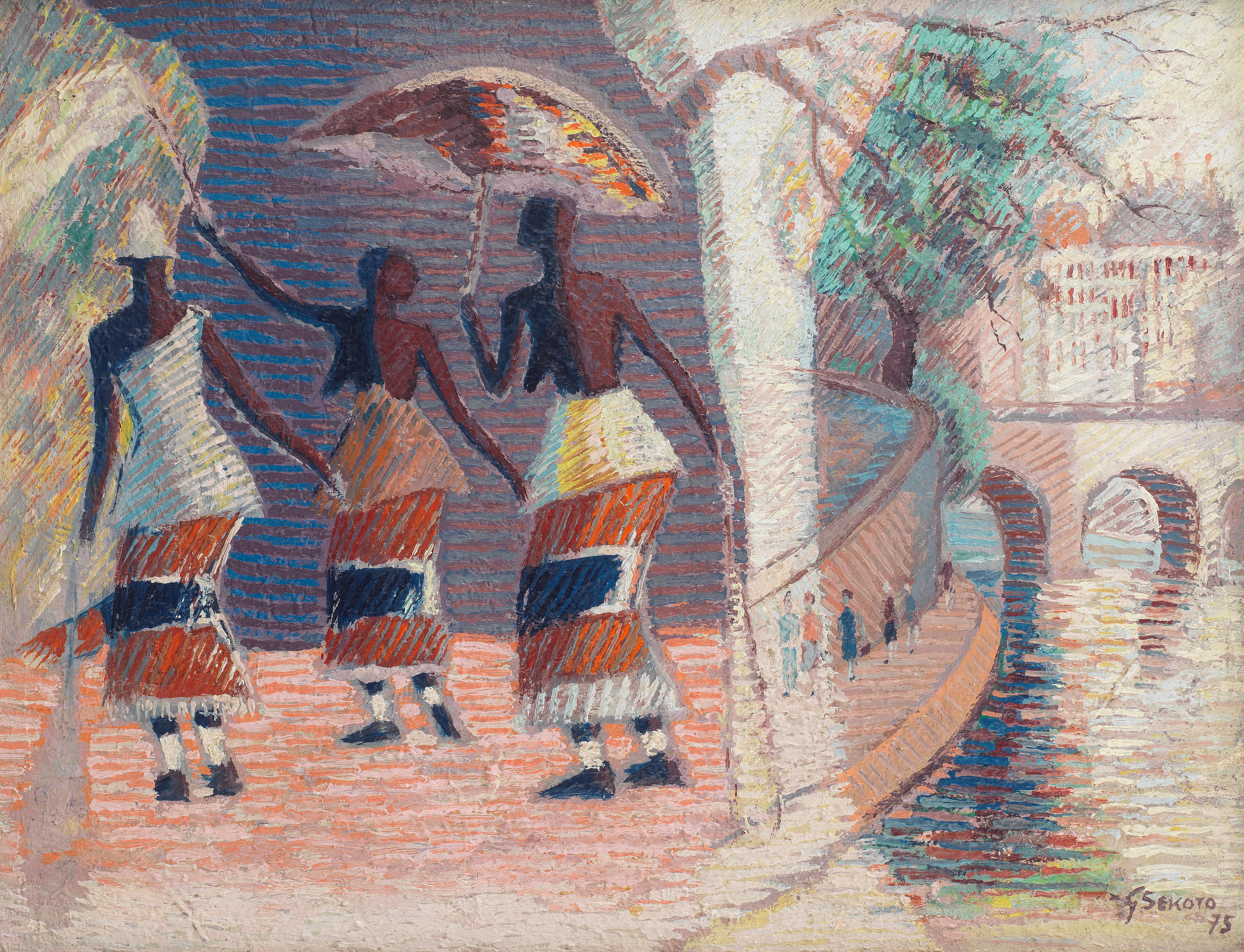
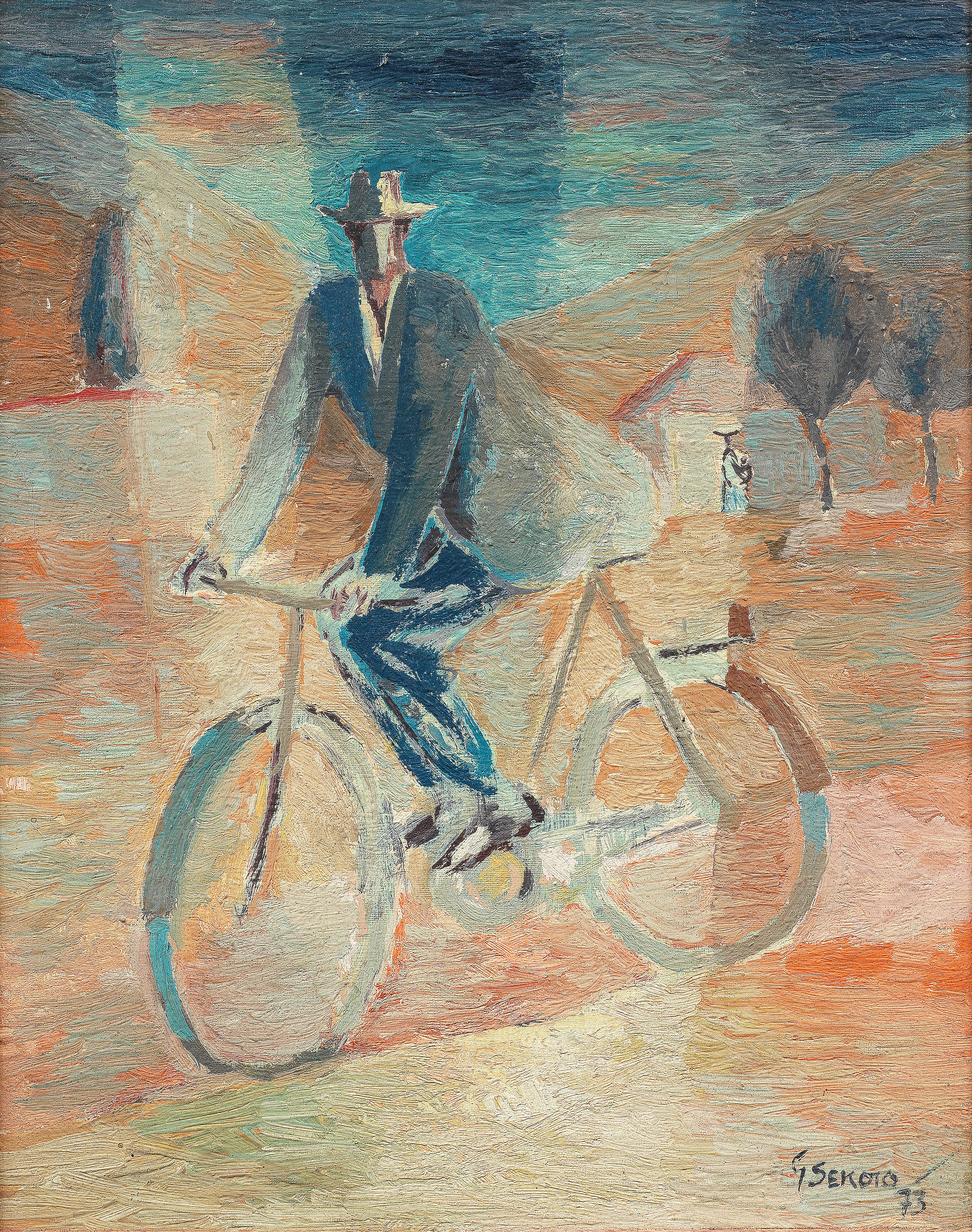
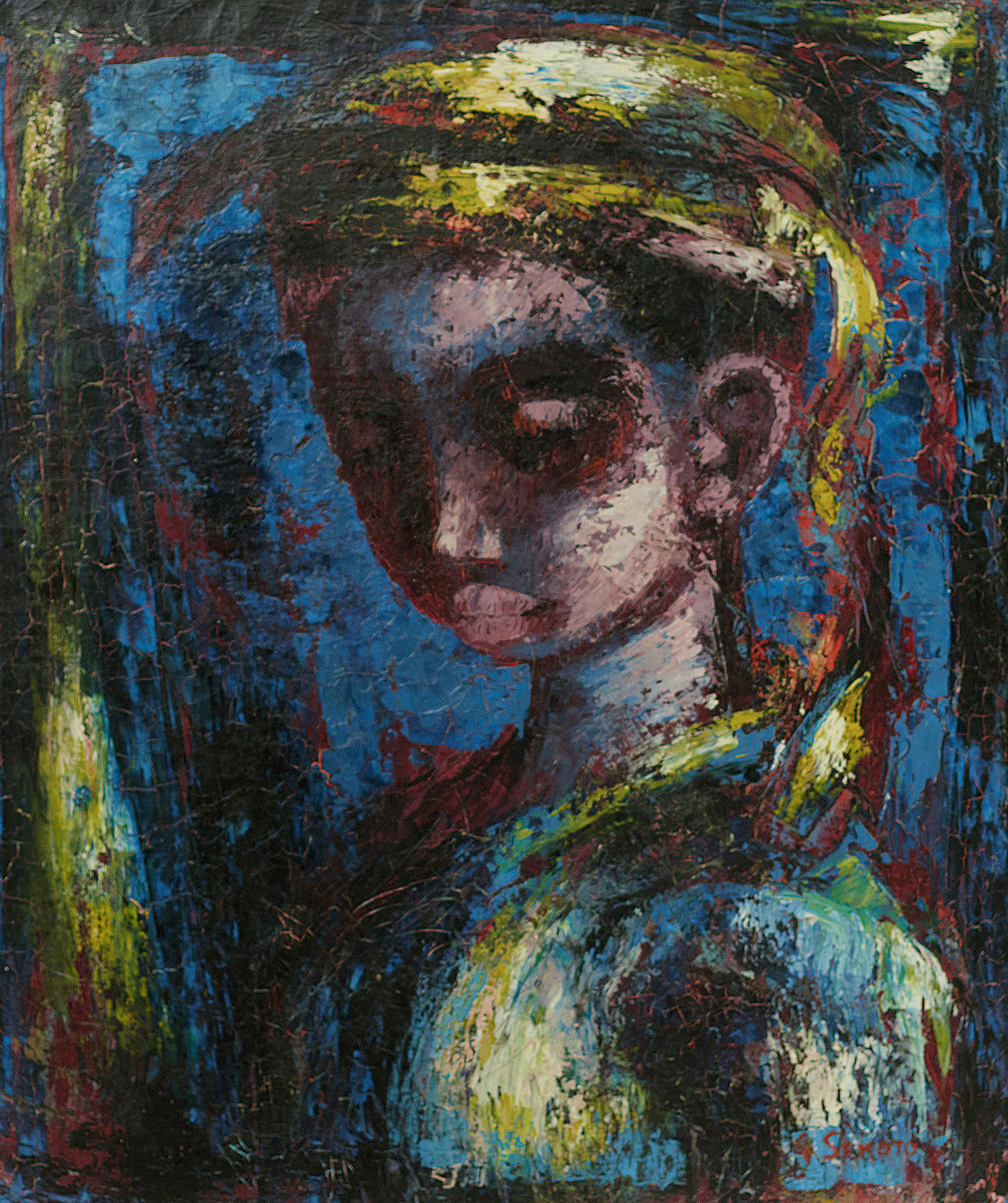
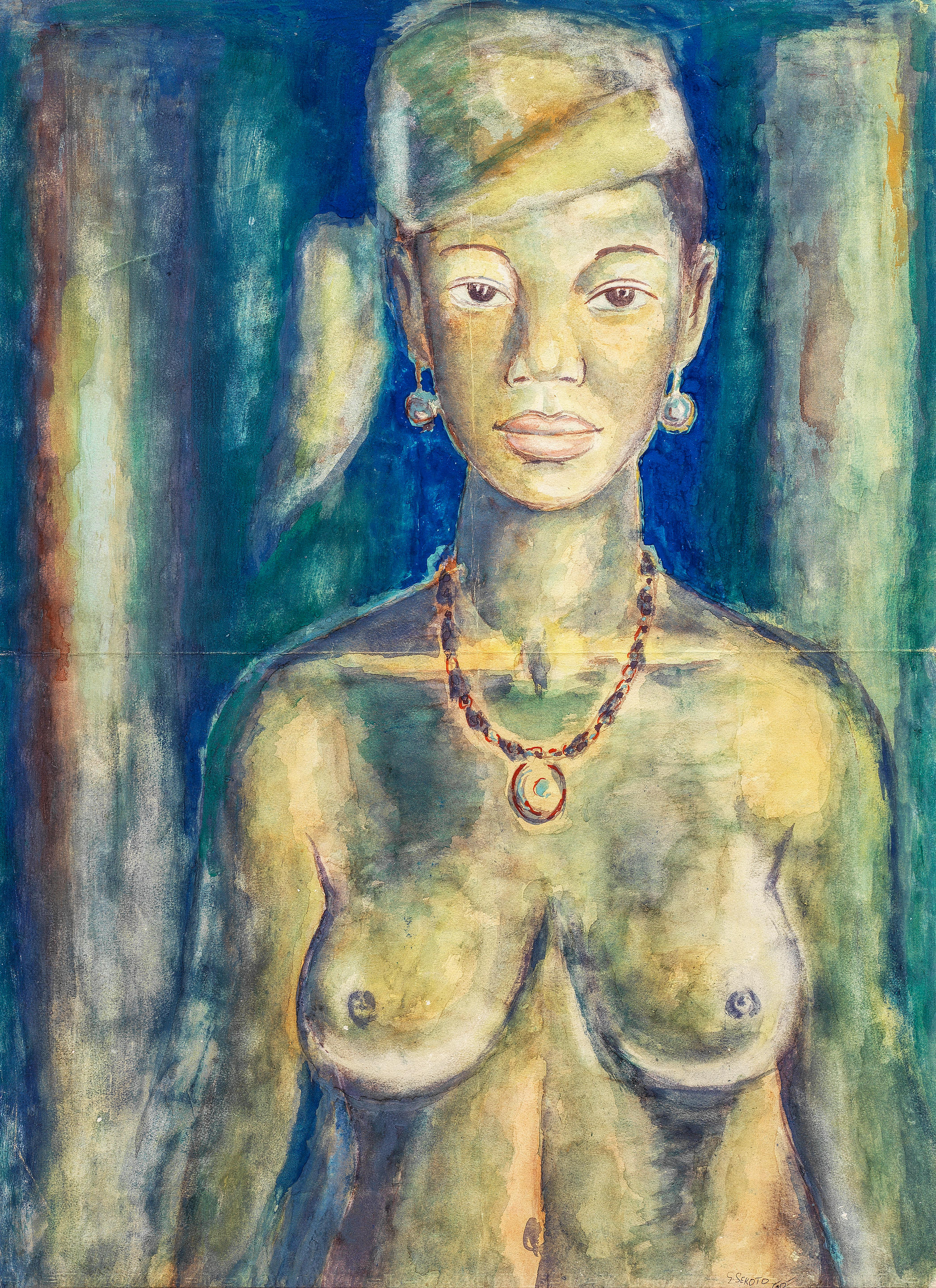
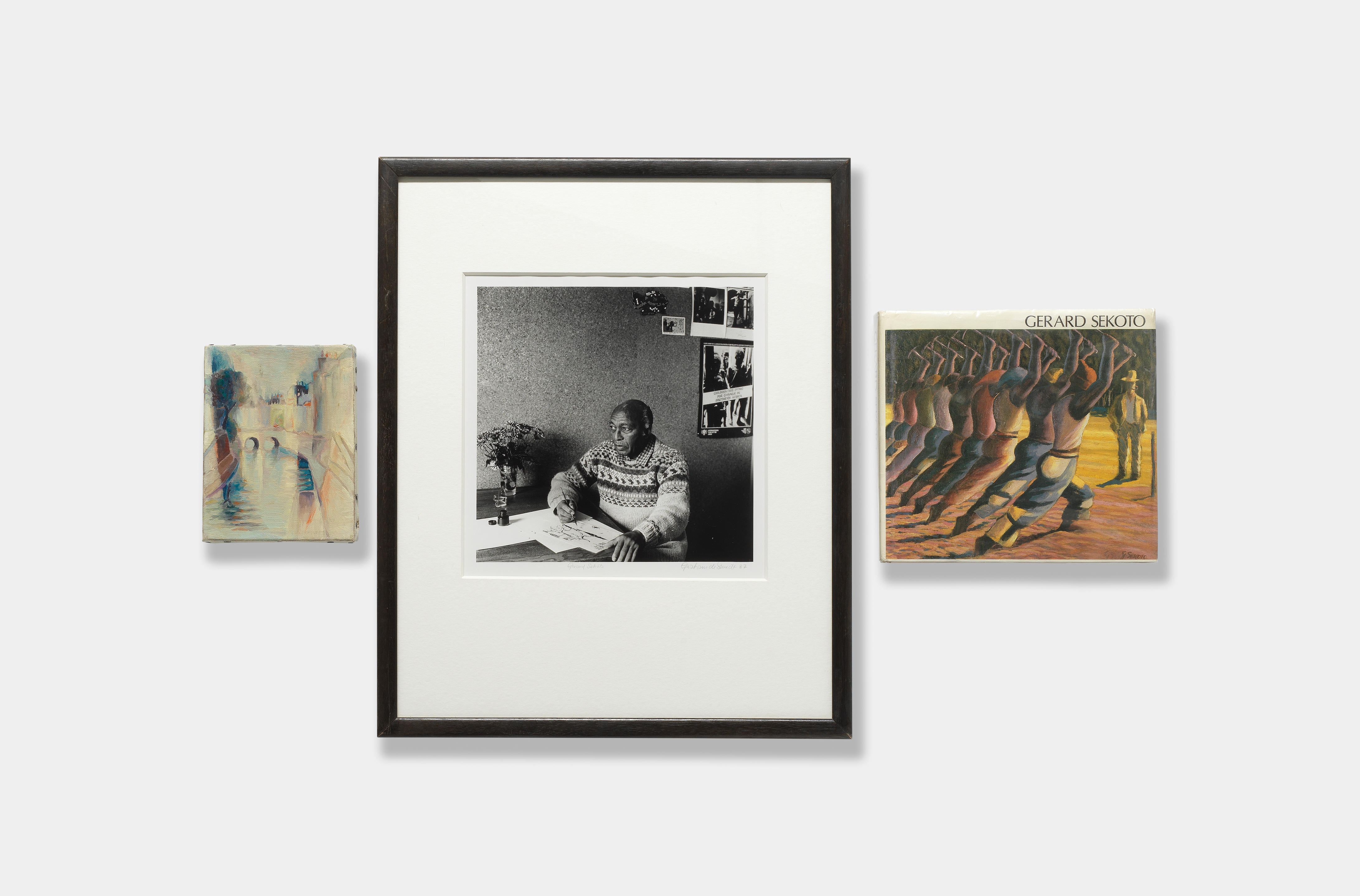
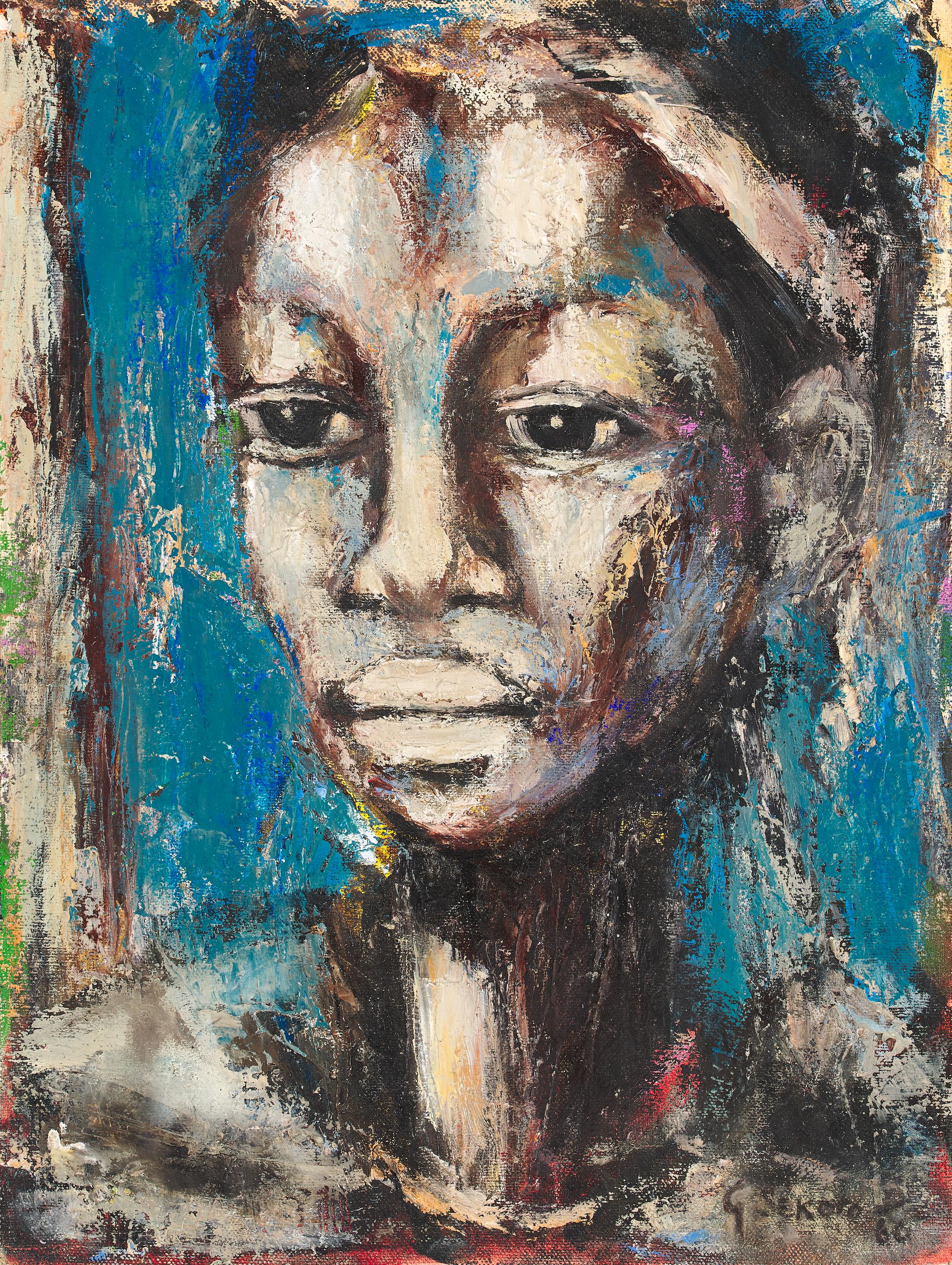

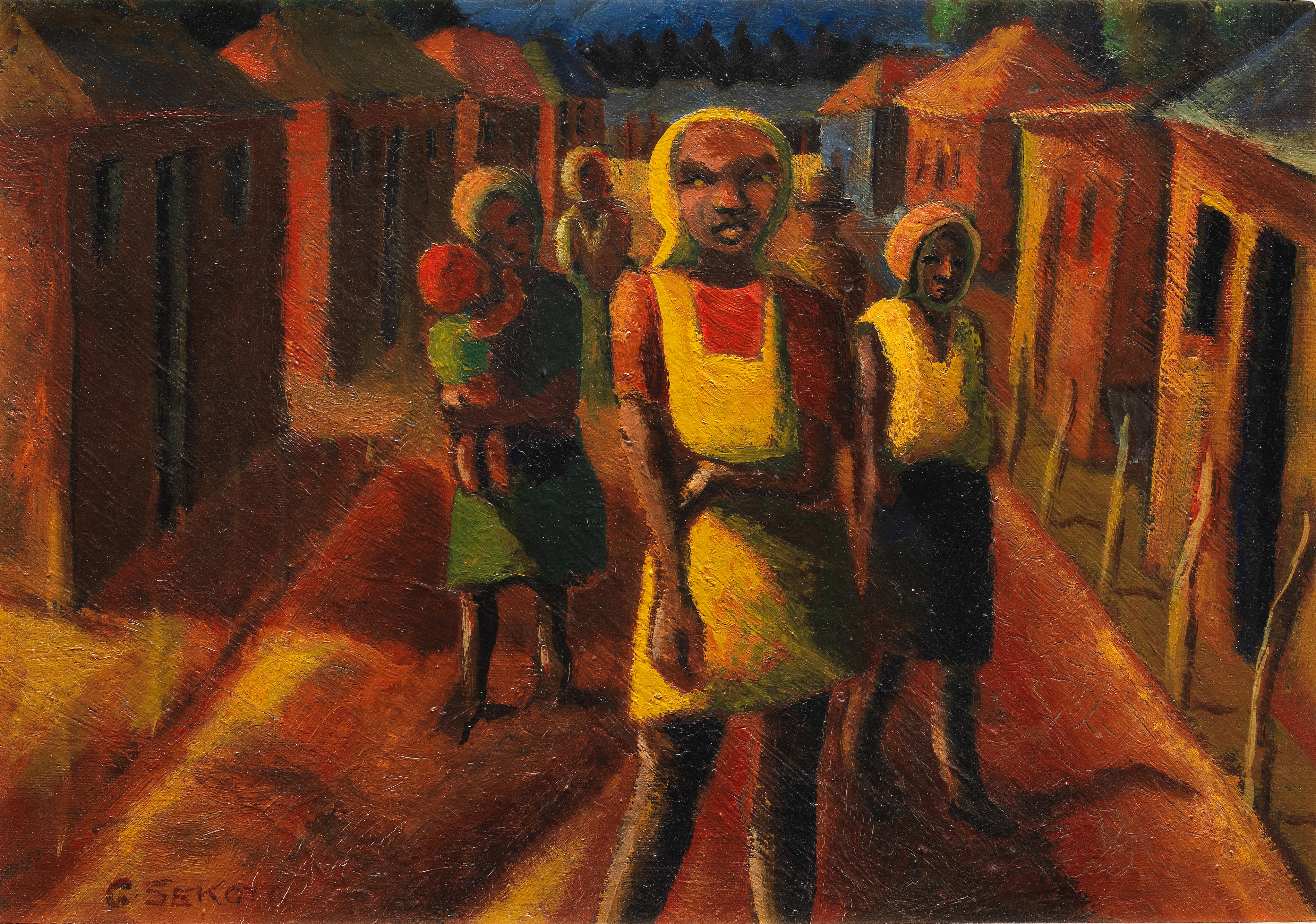






Testen Sie LotSearch und seine Premium-Features 7 Tage - ohne Kosten!
Lassen Sie sich automatisch über neue Objekte in kommenden Auktionen benachrichtigen.
Suchauftrag anlegen